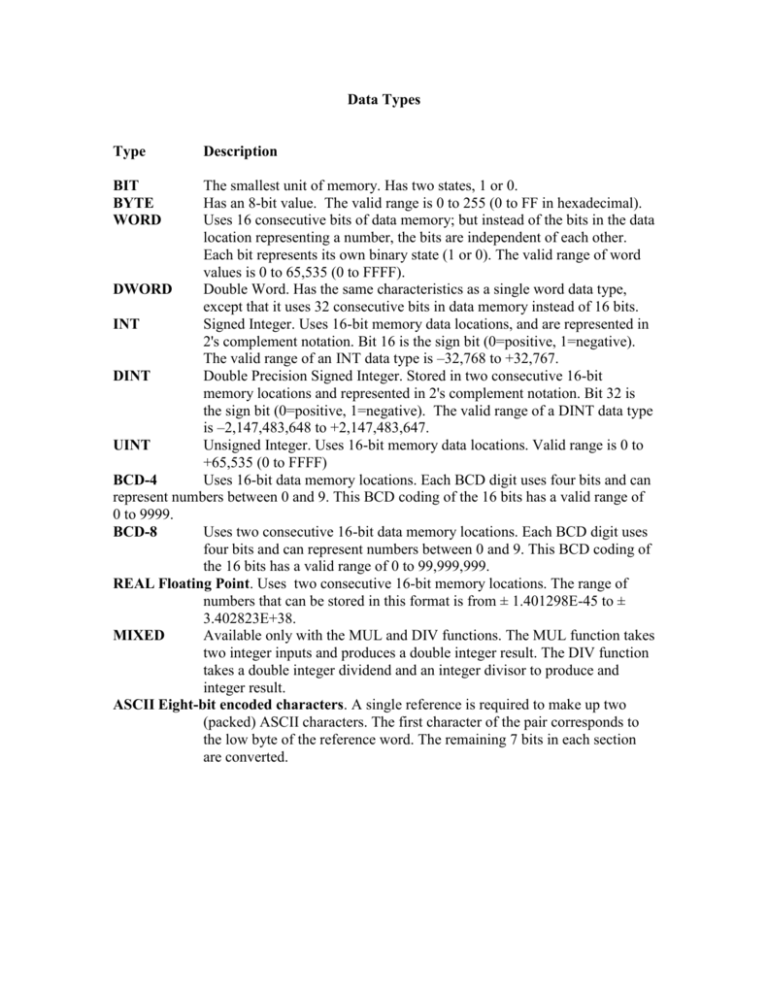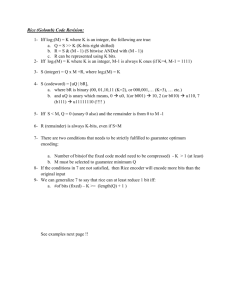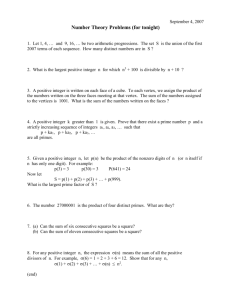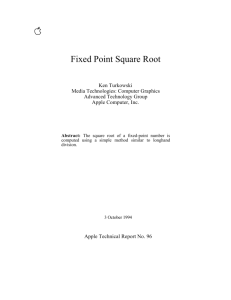Data Types
advertisement

Data Types Type BIT BYTE WORD Description The smallest unit of memory. Has two states, 1 or 0. Has an 8-bit value. The valid range is 0 to 255 (0 to FF in hexadecimal). Uses 16 consecutive bits of data memory; but instead of the bits in the data location representing a number, the bits are independent of each other. Each bit represents its own binary state (1 or 0). The valid range of word values is 0 to 65,535 (0 to FFFF). DWORD Double Word. Has the same characteristics as a single word data type, except that it uses 32 consecutive bits in data memory instead of 16 bits. INT Signed Integer. Uses 16-bit memory data locations, and are represented in 2's complement notation. Bit 16 is the sign bit (0=positive, 1=negative). The valid range of an INT data type is –32,768 to +32,767. DINT Double Precision Signed Integer. Stored in two consecutive 16-bit memory locations and represented in 2's complement notation. Bit 32 is the sign bit (0=positive, 1=negative). The valid range of a DINT data type is –2,147,483,648 to +2,147,483,647. UINT Unsigned Integer. Uses 16-bit memory data locations. Valid range is 0 to +65,535 (0 to FFFF) BCD-4 Uses 16-bit data memory locations. Each BCD digit uses four bits and can represent numbers between 0 and 9. This BCD coding of the 16 bits has a valid range of 0 to 9999. BCD-8 Uses two consecutive 16-bit data memory locations. Each BCD digit uses four bits and can represent numbers between 0 and 9. This BCD coding of the 16 bits has a valid range of 0 to 99,999,999. REAL Floating Point. Uses two consecutive 16-bit memory locations. The range of numbers that can be stored in this format is from ± 1.401298E-45 to ± 3.402823E+38. MIXED Available only with the MUL and DIV functions. The MUL function takes two integer inputs and produces a double integer result. The DIV function takes a double integer dividend and an integer divisor to produce and integer result. ASCII Eight-bit encoded characters. A single reference is required to make up two (packed) ASCII characters. The first character of the pair corresponds to the low byte of the reference word. The remaining 7 bits in each section are converted.






